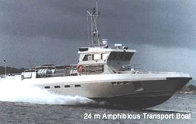LASS, Lightweight Construction Applications at Sea and Fire Safety

The fire safety of lightweight construction applications at sea has been considered in a comprehensive project, LASS. A report by SP, the Technical Research Institute of Sweden, has been published recently[1]. Fires cause ten percent of all casualties at sea and fire is, after grounding and collision, third in place with regard to insurance costs from accidents at sea.
To minimize the outbreak and development of fires onboard ships, the International Maritime Organization IMO has developed fire safety regulations for trading ships in the frame of the International Convention for the Safety of Life at Sea (SOLAS). In July 1998, IMO introduced the Fire Test Procedures Code (FTP Code), which contains fire test procedures for fire safe constructions and materials used onboard ships. The FTP-Code basically uses fire tests of the International Standards Organization ISO, which cover non-combustibility, fire resistance, flammability, spread of flame, smoke and toxicity of constructions and materials, as well as of specific products like textiles, upholstered furniture and bedding.
Lightweight materials for ship construction become increasingly popular because of lower fuel costs and because such constructions can enhance ship stability. A disadvantage of these materials is the lowered fire resistance compared to high density materials (metals). The development of lightweight construction therefore requires fire safety engineering in order to maintain the same level of safety as with traditional material. In the frame of SOLAS, the High Speed Crafts (HSC) Code does allow non-steel construction materials provided that they are "fire restricting". This means that they must pass a large scale fire test according to ISO 9705 (room corner test) with tough requirements on the amount of heat released and smoke produced.
It was central to the project to demonstrate certified fire safe composite constructions, e.g. for 60 minutes fire resistant deck and bulkhead constructions. Before the LASS project, there were no certificates at all for composites. Over a dozen construction certificates have been produced within LASS using new lightweight insulation materials. These certificates make it possible to actually build a high speed craft in FRP-composites in accordance to the HSC-code and also to provide a basis for composite constructions in SOLAS vessels. One system successfully investigated in the LASS project was a sandwich construction material consisting of two fibre-reinforced polymer (FRP) laminates around a core of lightweight PVC foam or balsa wood.
The project has shown that combustible sandwich construction materials meet the "fire restricting" requirements for high speed craft and allow the use of fire safe constructions in other applications for ships.
[1] Hertzberg, T. LASS, Lightweight Construction Applications at Sea. Fire Technology SP Report 2009:13